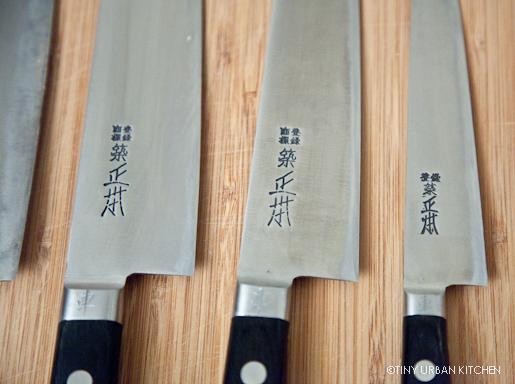
This post is part 4 of my series: Tribute to Japan. Other posts in this series include: Part 1: Kappabashi-dori, Part 2: Tapas Molecular Bar, and Part 3: Suzuran (Ramen)
Part 4: Japanese Matcha and Azuki Breads
I'm not one that typically buys souvenirs.
Sure, there was a time back in high school when I obsessively collected pins or mugs from every place I visited, keen on bringing back with me physical mementos of my trips. As the unused junk started piling up at home, I subconsciously began coming home from my trips empty-handed.
That totally didn't happen on this Japan trip. For some reason, (probably via Bryan's insistent prodding) I decided it was time to upgrade my knives. Up until this point, I had been using the same, relatively economical knife set that I got right after college.
Japan is probably THE top maker of knives in the entire world. Japanese steel is generally much harder than Western steel, and thus their knives hold their edge a lot better. How else do those sushi chefs cut such perfectly thin and delicate slices of fish? Of all cuisines, Japanese is the one with the artistry and sophistication that really demands the highest quality knives in the world.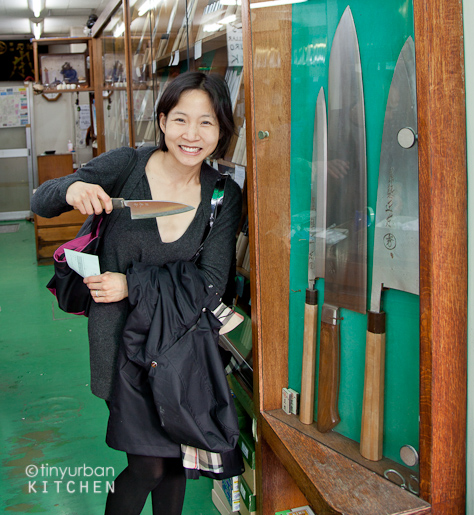
After doing some reasonably extensive research online, I decided to visit Masamoto Tsukiji in Japan's most famous fish market, Tsukiji Fish Market.
This old world knife shop opened in 1891 and is currently owned by the 5th generation of the family. Not to be confused with Masamoto Souhonten, a completely unrelated company (although they do have the exact same logo - likely due to a split earlier on?), Masamoto Tsukiji is the smaller of the two, but still extremely highly regarded.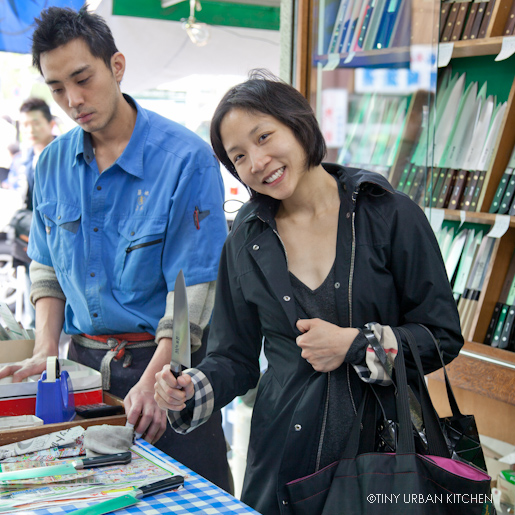
It's arguable which knife company is better. Of course Masamoto Tsukiji claims it's better, though others would argue that Souhonten is the industry standard for excellence.
Some report that Tsukiji knives are all handmade whereas Souhonten has gone the larger, commercial route, selling machine-made knives in bigger, fancier stores. The logo for most Tsukiji knives are hand "stamped" while the Souhonten ones are machine stamped. In fact, you can get your name personally engraved on the Tsukiji knives! I was fascinated by the skills of the store owner, who sharpened our knives for us and also hand-engraved our name on the knives.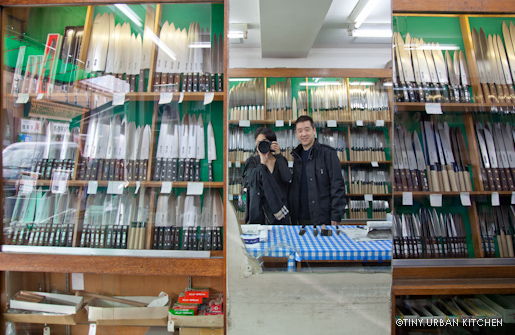
It's a bit overwhelming to pick out a knife, as the store is filled with many, many different types. Many of these knives are pretty specific for Japanese cooking, especially the various sushi knives, and therefore there's a high likelihood that a typical home cook will not consider most of them. In fact, 90% of Masamoto Tsukiji's users are culinary professionals in Japan.
Steel
For me, the choice came down to a few key issues. First, I had to choose whether I wanted a carbon steel knife or a stainless steel knife. As a general rule, carbon steel knives sharpen more easily and have a smoother and sharper edge. Overall, they perform much better than stainless steel knives.
However, there are some disadvantages. Carbon steel knives are slightly more "brittle" and may not retain their edges as well. They rust easily, and therefore you must take care to wipe the knife dry after every use. They are sensitive to acidic foods and can easily discolor upon contact.
Stainless steel knives, although perhaps not as sharp, can withstand a lot more abuse. They are much less brittle and pretty impossible to rust. If you leave it in a wet sink and forget about it, you won't see a rusty knife the next day. Overall, they are much lower maintenance.
Industry professionals tend to use the superior carbon steel knives. It was quite clear that Masamoto Tsukiji was geared toward the restaurant industry. In fact, out of the hundreds of knives in the store, there were only four stainless steel knife choices.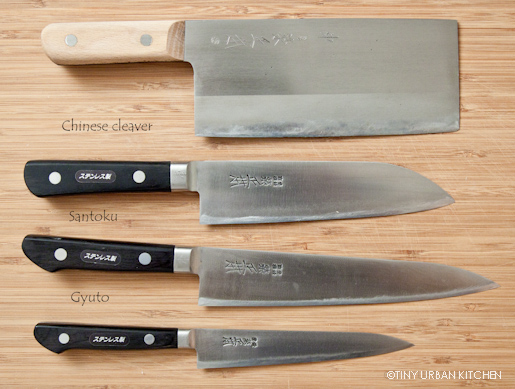
I knew myself as a cook and knew that I needed a knife that I could sort of abuse. I decided to purchase three stainless steel knives and one carbon steel knife.
Chinese Cleaver (carbon steel)
Rectangular, heavier blade, all purpose knife for Chinese cooking. This workhorse is super sharp and chops like a dream. It's a bit big for my hands, but the large size makes chopping large vegetables (such as huge heads of cabbage) or huge fruit (like watermelons) much easier.
Santoku
Light, thin-blade, typically vegetable knife. Though some argue that this is not worth buying, it has become one of my favorite knives. The slightly smaller size fits my hand absolutely perfectly, and thus I feel like I have a lot of control (compared to the gyuto, which is just a bit long for my comfort).
Gyuto
"Butcher's Knife" - this is the closest thing to a chef's knife by Western standards. This medium weight knife can be used for meats, vegetables, and even bread! Most will argue that if you're going to get just one knife, this one is by far the most useful.
Small "Petty" Knife
I'm not sure of the name of the smallest knife on the bottom, but it reminds me of a slightly longer paring knife. The only stainless steel knife I didn't buy was an even smaller one which reminded me of a steak knife. Basically, the store employee recommended the larger one over the smallest one.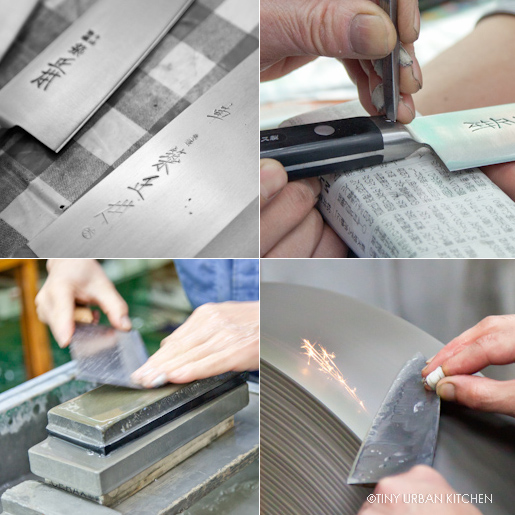
Once you've picked out your knives, they sharpen and engrave each one at the store. It was fascinating watching them go through the step-by-step process of sharpening - first with a huge rolling stone and eventually down to whetstones of different "roughness" grades.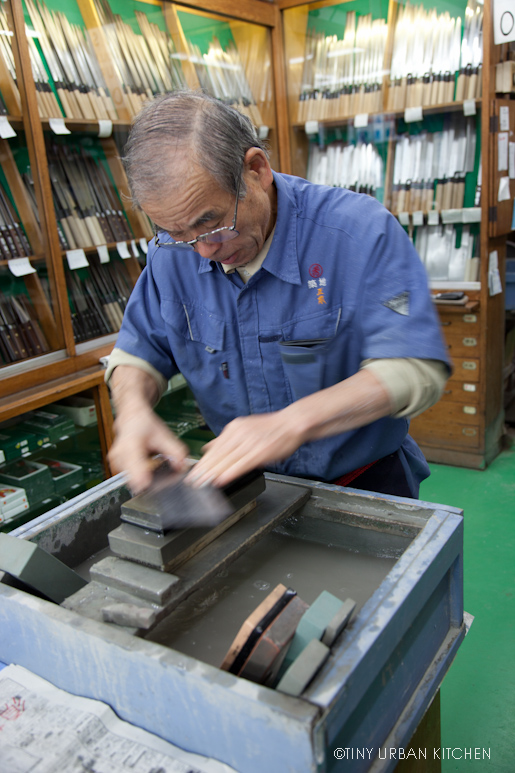
Here's the store owner, manually sharpening my knife on a whetstone.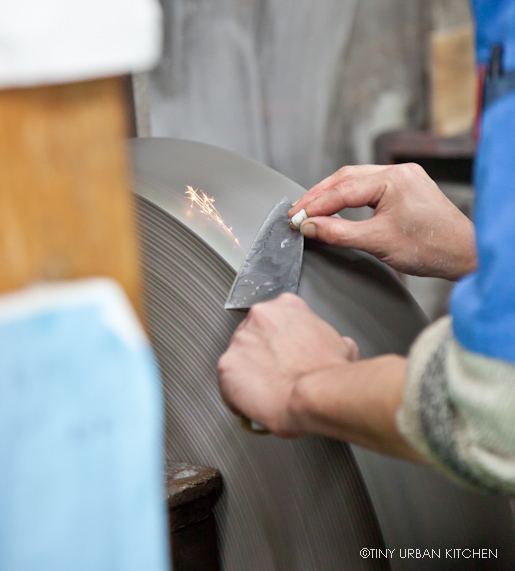
Sparks fly!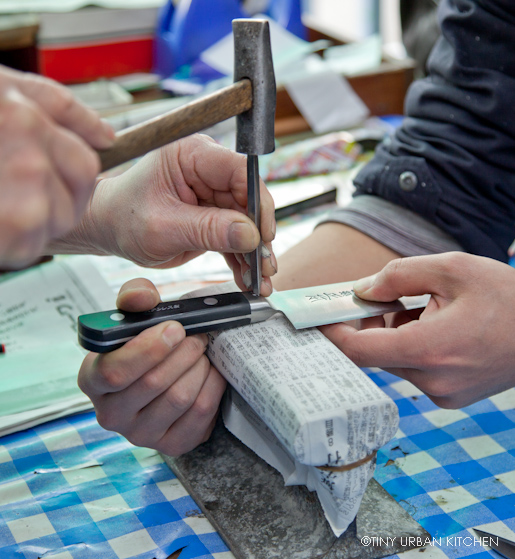
I was really amazed at the artistry of the hand-engraving. With just a few tools, he was able to write out beautiful-looking Chinese/Japanese characters on the side of the knife.
The knives at Masamoto Tsukiji are not cheap. I think the prices for my four knives ranged from around $75 (for the smallest one) to over $200 for the Chinese cleaver. I think I spent close to $600 in the store. One inconvenient point is that they accept cash-only (Euros, dollars, Yen all OK). We had trouble taking out so much money at one time from the ATM. We ended up having to withdraw multiple batches before being able to come back (nearest international ATM was 10 minutes away in Ginza) and pay with cash. 😛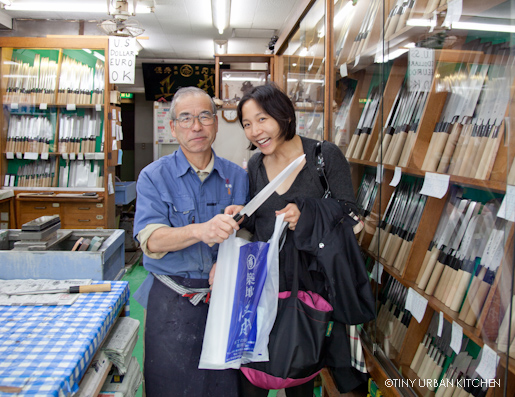
Absolutely no complaints, though. I love love love my knives. I have never used such sharp knives before in my life. They seriously make prep work so much easier. Prep tasks that used to be a chore are now simple, as these knives will cut through most things like butter.
I have accidentally hurt myself a few times because I forget how seriously SHARP these guys are. I'll lightly brush my hand against the edge and the next thing you know, I'm bleeding.
Must show respect!
I highly recommend these knives. They are beautiful, cut like a dream, and are a special, sentimental reminder for me of one of my favorite countries. I think they are worth the hassle of lugging all the way back from Japan because:
1) They are very difficult to get outside of Japan (thought there might be ways now) and
2) They are very very useful, totally different from the scores of keychains, mugs, and T-shirts I used to buy while traveling
3) It's totally worth it to watch the knife being hand-sharpened and hand-engraved right in front of you at the shop! A personalized souvenir!
Here's the hand engraved logo (bottom) with our family name (CHE) on top.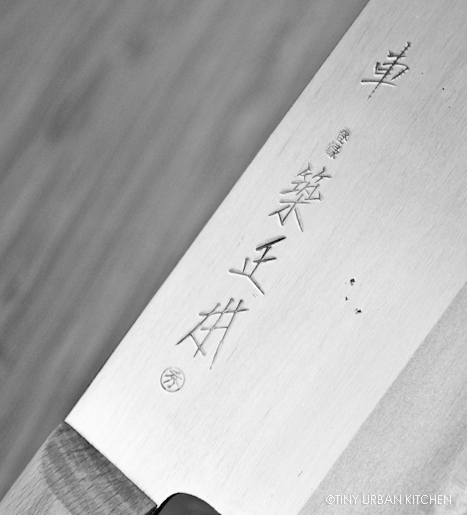
4-9-9 Tsukiji, Chuo-ku
(Harumi Dori, Shin Ohashi Dori)
81-3-3541-7155
tukijimasamoto.co.jp
All Rights Reserved




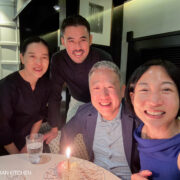


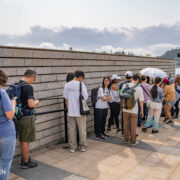





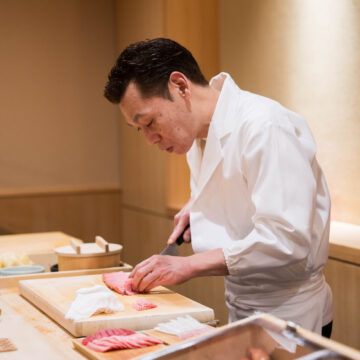
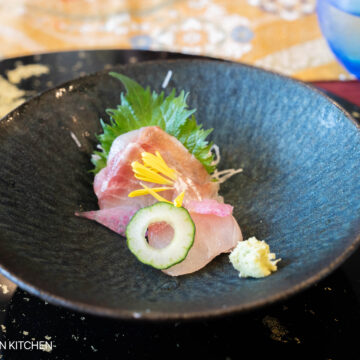
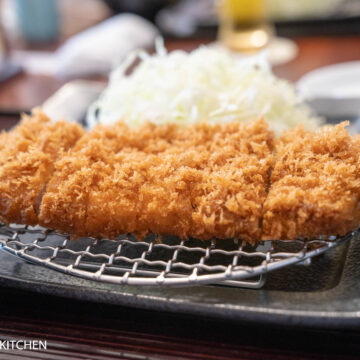
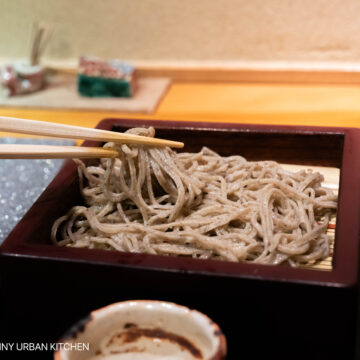
[…] rare that I take out my super special sushi cutting knife that I bought at Tsukiji Fish Market almost ten years ago (sniff sniff, […]